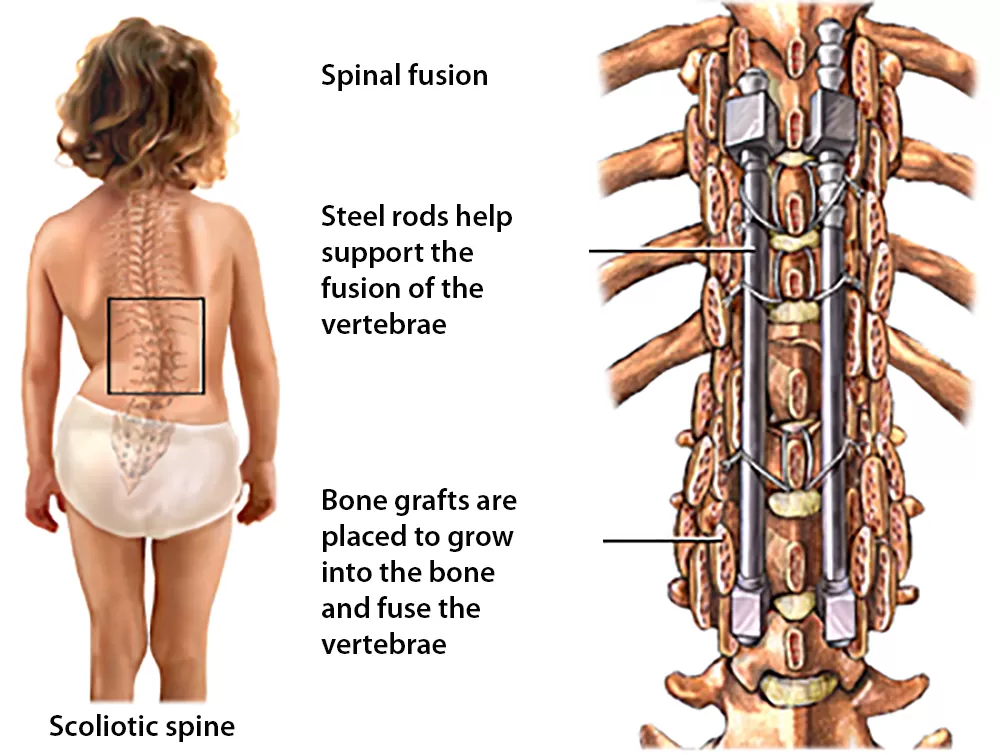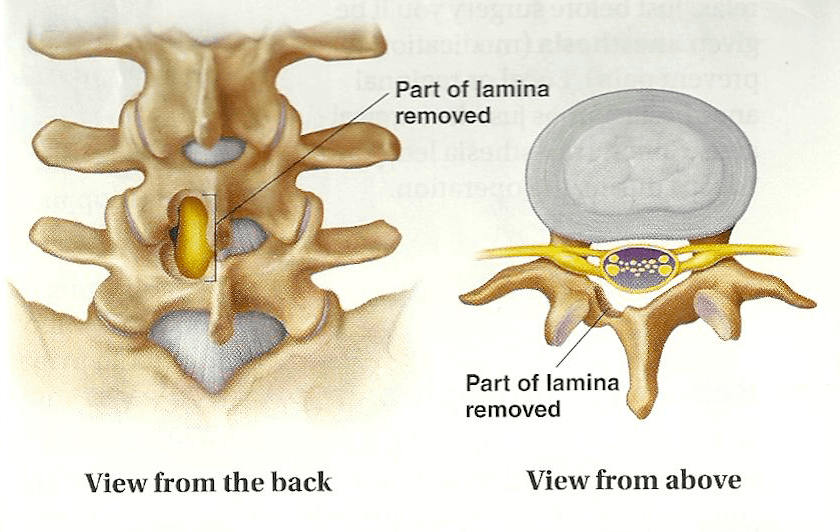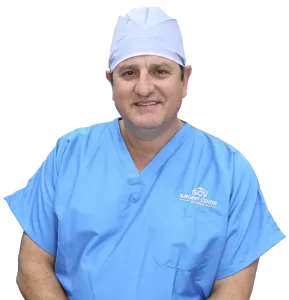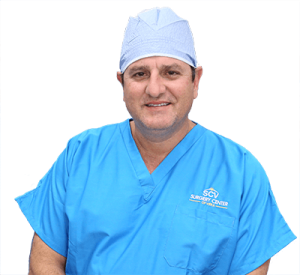
With almost 65 million Americans reporting a recent episode of back or neck pain, and about 80% of US adults saying they’ve had back or neck pain at some point in their lives, it is evident that pain is a severe health concern.
The most appropriate treatment depends on the cause of the pain. For example, spinal fusion surgery might be recommended if the pain source is due to vertebrae’s excessive movement.
Spinal fusion surgery connects two or more vertebrae that exhibit excessive movement and are causing pain. The videos below explain some of the reasons patients might experience pain in the cervical and lumbar spine.
If your doctor has recommended spinal fusion surgery, this article will help you determine if it’s best or if you should explore an alternative.
Read on to find out what spinal fusion surgery is, the risks and benefits of this procedure, the expected recovery period, and the best alternatives.
Spinal fusion surgery offers relief from pain symptoms related to herniated discs or bone spurs. Before surgery, patients report chronic pain, loss of motion or coordination, numbness and tingling. Spinal fusion surgery treats these debilitating symptoms by:
Spinal fusion is designed to permanently connect or fuse two or more vertebrae in the spine.
The process of fusing the vertebrae is not immediate and usually takes 3-6 months to form a singular, solid bone.
This procedure is used to treat various conditions, diseases, and back problems and is designed to mimic the natural healing process of broken bones.
Doctors may use extra bone, medical-grade titanium rods, screws, or a combination thereof to ensure correct bone graft growth and healing.

Spinal fusion surgery limits the motion of pain-causing vertebrae. The goal of the procedure is straightforward. A spinal fusion is designed to fuse two vertebrae to reduce the mobility between the bones.
Some of the most common reasons a doctor would recommend spinal fusion include:

Depending on the specific procedure you’re having, spinal fusion surgery may be performed under general or local anesthesia.
Generally speaking, there are three main elements to spinal fusion surgery, and they are outlined as follows:
When the procedure is complete, you move into a recovery room to comfortably come around from the anesthesia.
When you are awake, either the surgeon or another medical professional will explain how the procedure went and talk you through the first steps of the recovery process.
Spinal fusion surgery is considered to be a fairly invasive surgery.
Here at the Deuk Spine Institute, we perform spinal fusions when necessary and we have the lowest rates of infections or complications and the quickest recovery times for any type of spinal fusion. However, we also offer an alternative to spinal fusion that is far less invasive called Deuk Laser Disc Repair which is used to cure back or neck pain caused by a herniated or bulging disc.
We have a 0% infection rate at our world-class surgery facility, and the complication rate for our spinal fusion procedure is less than 1%.
Still, there are always risks involved with any form of surgery.
The potential risks associated with spinal fusion surgery are:
Is spinal fusion right for you? You may want to consider less invasive surgeries like Deuk Laser Disc Repair and other options outlined later in this article.
Spinal fusion is very effective at treating deformities, instability, and fractures in the spine. It’s a versatile form of back surgery used to treat a wide range of conditions.
What is it:
Deuk Laser Disc Repair is an alternative to dangerous invasive spine surgeries like total disc replacement and spinal fusion. It is the most advanced laser surgery in the world.
This revolutionary procedure was developed by Dr. Ara Deukmedjian MD, a world renowned neuro-spine surgeon and a true pioneer in minimally invasive, laser, and endoscopic back and neck pain treatment.
Deuk Laser Disc Repair is a form of endoscopic spine surgery performed in a state-of-the-art surgery center under sedation while the patient relaxes. This procedure does not compromise or weaken the health and integrity of the spine.
If you have a herniated or bulging disc or chronic back or neck pain, submit your MRI for a free review.
To get started, Deuk Laser Disc Repair requires a very small incision, less than a quarter inch long. A cylindrical rod called a dilator is inserted in the small opening to gently spread the muscle to create a small passage and guide through which the surgery is performed endoscopically. The tip of the dilator is advanced into the symptomatic disc through the tear in the annulus where the herniation originates, and a tube called the retractor slides over the dilator and is carefully positioned into the painful disc. The rest of the entire Deuk laser disc repair surgery will occur inside this narrow tube.
To access the spine, an endoscopic camera is inserted into the tubular retractor to allow the surgeon to guide the laser inside each symptomatic disc. This process ensures that bones and surrounding tissues are not damaged, unlike traditional spinal fusions, microdiscectomy
and artificial discs.
The Holmium YAG laser used in the Deuk laser disc repair is manipulated accurately with millimeter precision under endoscopic visualization to remove only painful inflammatory tissue from the back of the disc. The laser is precisely used to remove damaged disc material that is causing the pain. This process is called debridement of the annular tear and Dr. Ara Deukmedjian MD was the first in the world to use and publish this technique.
Once the laser has removed the inflamed painful part of the annular tear and the herniated nucleus pulposus, the endoscope and tubular retractor are removed, leaving less than one-quarter inch incision in the skin, which can be closed with a single stitch and a band-aid.
The total time for the Deuk laser disc repair surgery is one hour, and the patient is in recovery for about 45 to 60 minutes before being released to go home. Hospitalization is not needed and the risks of hospital-based surgery are avoided.
Also, with the Deuk laser disc repair, there’s no loss of normal movement, and the flexibility of the disc and joint is preserved. With endoscopic Deuk laser disc repair there is no fusion, metal implants or biological material added to the spine. The procedure is all natural allowing your body to heal the herniated or bulging disc itself.
After the surgery, the Deuk laser disc repair patient is back home, enjoying life with a speedy recovery allowing normal activities without pain. Another advantage of Deuk laser disc repair is that no opioids or powerful narcotic painkillers are needed after surgery. Open spine surgeries like microdiscectomy, laminectomy, artificial disc replacement and fusion all cause so much internal trauma that patients are in severe pain after surgery and must take painkillers for weeks after their surgery but not with Deuk laser disc repair.

Recovery time:
Deuk Laser Disc Repair has one of the fastest recovery times of any back surgery. Patients will typically be up and walking within the hour and can leave the same day.
It is recommended that patients use hot/cold packs if they experience pain during recovery. Patients should avoid lifting anything over 20 pounds until cleared by their surgeon and are directed to contact the facility if any redness, swelling, or pain occurs after the procedure.
Cost:
Pricing varies based on an individual’s needs. Book a free MRI review here to find out if this surgery is the most appropriate for you and how much it will cost.
What is it:
Laminectomy and laminotomy surgeries are types of surgical procedures typically used to relieve compression on the spinal cord. These procedures are most commonly used to treat a condition known as spinal stenosis.
During surgery, the surgeon makes an incision on the patient’s back to access the problematic vertebrae. This procedure, sometimes referred to as “open decompression,” focuses on the lamina and attached ligaments, the part of the vertebrae that forms the vertebral arch in your spine found on the back (posterior) part of the bone to treat spinal stenosis. Once the surgeon has access to the vertebra, they remove the lamina and ligaments from the spine and any bone spurs or fragments that may also be pinching nerves. Unfortunately, laminectomy and laminotomy do not treat back pain or neck pain and frequently make back pain worse.
A laminectomy/laminotomy is usually completed to treat the symptoms of central spinal stenosis, a condition that narrows the spinal canal. The removal of the lamina from the vertebrae ultimately creates more space for the spinal cord and nerves from the narrowing caused by spinal stenosis. With the extra space allotted for the spine and with the removal of the source of pressure, patients will feel a decrease in their leg or arm symptoms but not back pain. The surgery usually takes 2-3 hours.
During a laminectomy/laminotomy, it is common for the surgeon to perform a spinal fusion because of the instability the laminectomy causes. A bone graft is placed between vertebrae discs to fuse them together, forming a single, elongated bone. Laminotomy is always performed as part of a lumbar microdiscectomy to unpinch nerves to the legs
At Deuk Spine Institute, we have found a way to eliminate the need for traditional Laminectomies through the use of minimally invasive laser surgery which drastically increases success rates, eliminates complications, and decreases the amount of time patients spend in recovery.

Recovery time:
A laminectomy/laminotomy is an ‘open surgery, resulting in most patients experiencing a lengthy recovery period. Patients usually stay in the hospital for 2-4 days following the procedure to be monitored for infection and complications.
Patients are prescribed pain medications and stool softeners for their return home. Surgeons restrict intense exercise and limit physical activity for the first month of recovery. Physical therapy is recommended for most patients to help with the recovery period.
Patients who no longer take opioid pain medications can return to driving within two months after surgery. Depending on the recovery process and the patient’s health, full recovery is usually seen within 2-6 months.
Cost:
Pricing varies based on an individual’s needs. To find out if this surgery is the most appropriate for you and how much it will cost, book a free MRI review here.
What is it:
A discectomy procedure removes the external herniated portion of a damaged disc, relieving nerve root pressure. It does not treat back pain or neck pain, only leg pain or arm pain. The surgeon performs this by entering the patient’s back and making holes in the bones and ligaments of the spine to get to the herniation. The surgeon cuts through the tissues around the vertebra with various tools and removes bone, ligament and eventually only part of the herniated component of the disc. Surgeons are limited on how much of the herniation they can remove by how much they can see and since it is impossible to see all the herniation in a discectomy, they end up removing very little of the herniation. This is the main reason this procedure does not work well and it is not performed at Deuk Spine Institute.
A discectomy means “cutting out the disc,” and patients can have one or more discs removed in one treatment. Different vertebrae are referred to as “levels.” The “open” approach is used to execute a discectomy. To see the spine directly, the surgeon makes a wider incision, which is more intrusive than the minimally invasive procedure.
In discectomy surgery, there is a very high chance of infection and nerve damage to the surrounding nerve roots due to the tools used for the incision and operation as well as the poor visibility. This is an older technique and does not use newer more advanced technology like the endoscope or microsurgery.

Recovery time:
The recovery time will vary depending on the underlying disease treated, a patient’s general health, and how they manage their recovery.
Generally speaking, most patients are mobile within a day and can expect to return to work within 2 to 4 weeks if their job doesn’t involve any physically demanding tasks. Patients should avoid any heavy lifting or intense exercise until cleared by their surgeon.
Surgeons recommend a physical therapist to help explain helpful exercises and what precautions need to be acknowledged.
Cost:
Pricing varies based on an individual’s needs. To find out if this surgery is the most appropriate for you and how much it will cost, book a free MRI review here.
A microdiscectomy procedure is very similar to a discectomy surgery. However, it uses a microscope and a 2-3 inch skin incision. A microdiscectomy is a surgical procedure that removes disc material that has spilled out and places pressure on nearby nerve roots. The surgeon creates a 2-3 inch incision on the patient’s back above the ruptured disc area during the treatment. The surgeon next removes bone and ligaments from the spine to gain access to the hernia after cutting the muscle away from the spine. This method is typically used for those who have sciatica, a disorder caused by compression of the spinal nerves. This procedure doesn’t not treat back pain and frequently makes back pain worse. Many patients that have microdiscectomy get their symptoms back usually within a year or two and they require additional surgeries to correct the damage caused by the original microdiscectomy.
When patients have leg weakness or numbness resulting from a herniated disc that puts pressure on the spinal nerve, this invasive method is often recommended by surgeons that do not have the ability to perform Deuk Laser Disc Repair. Because the surgeon must remove normal spine bone, ligaments and joints to reach the herniated disc, instability is common and many patients require a second or third surgery to correct damage from the first. The use of the microscope means this surgery is often performed at a hospital which has higher risk of causing infection. Because microdiscectomy requires the surgeon to damage the patient’s muscle, bones, spinal ligaments and spinal joints in an attempt to remove a small portion of the herniated disc and because complications are common and recovery from the surgery requires use of highly addictive opioid painkillers and the need for additional surgeries is likely, Deuk Spine Institute no longer performs this procedure.
Recovery time:
Most patients leave the hospital the same day or stay overnight to ensure no infections or complications arise. Patients will walk the same day but must be mindful about activities for 1-2 weeks.
The overall recovery time is typically around 6-weeks. How soon patients go back to work depends on what type of work. However, most patients can return within 2-3 weeks.
Pain medication may be required, and there will be some exercises given by a physical therapist to strengthen the muscles in the back.
Cost:
Pricing varies based on an individual’s needs. To find out if this surgery is the most appropriate for you and how much it will cost, book a free MRI review here.
The exact recovery time will vary depending on the specific procedure, the general health of the patient, and how they approach the recovery period.
Generally speaking, most patients will spend 1 to 3 days in hospital following the surgery. Although, patients at the Deuk Spine Institute can typically return home the same day to recover in a comfortable setting.
Most patients will take pain medication the first few weeks. Patients are encouraged to see a physical therapist explaining how to maintain a good posture along with some exercises you can do to strengthen the spine as it recovers.
Depending on what line of work you do, you may be able to return to work within 2 to 4 weeks. But heavy lifting and strenuous activities will have to be avoided until cleared by your surgeon.
The actual fusing of the bones can take up to 6 weeks or longer. A full recovery is typically expected to take between 3 to 6 months, depending on your age, physical condition, and how you care for your spine after the surgery.
No one looks forward to going in for surgery. Even a routine procedure like a spinal fusion can cause anxiety.
Have a good network of friends or family around you for support. In addition, always speak with your doctor about any concerns you have.
Before the procedure, your surgeon or medical staff will ask all of the questions necessary to get the information they need to carry out the operation.
A few of the things to consider on the day of the surgery are:
Have help to get home – You will not be able to drive yourself home after a spinal fusion. Arrange for a friend or family member to take you home and help you get comfortable.
Know what to expect – The best way to feel comfortable about the whole procedure is to avoid surprises. So make sure you’re fully aware of what to expect before, during, and after the procedure.
Speak up – There are no silly questions. If you have concerns, be sure to speak about them with someone at the clinic before going in for your surgery.
Depending on the location of the spinal fusion and the specific procedure, you could return home anywhere from a few hours afterward to several days.
They brief you at the hospital regarding caring for the surgical wound and looking after the operated area. Likely, you will also have a follow-up appointment in several weeks with your surgeon to ensure the graft is fusing the vertebrae correctly.
In the meantime, contact your doctor immediately if you exhibit any signs of infection or you are experiencing severe pain.
It’s also a good idea to start considering making positive lifestyle changes. Living a healthy life, maintaining a good weight, and not putting your back under undue strain are just a few of the things that can reduce the chance of you needing further back surgeries in the future.
All things going well, most spinal fusion patients can typically go back to work and start performing light activities within 2 to 4 weeks.
Pricing for medical services varies considerably based on individual needs. To find out how much a spinal fusion will cost, you’ll need to consult with a surgeon where they can look at your specific needs.
If you are suffering from back or neck pain and considering surgery, send us your MRI scan for a free review or schedule an in-person appointment at our clinic in Florida and we can determine the best options for you.

